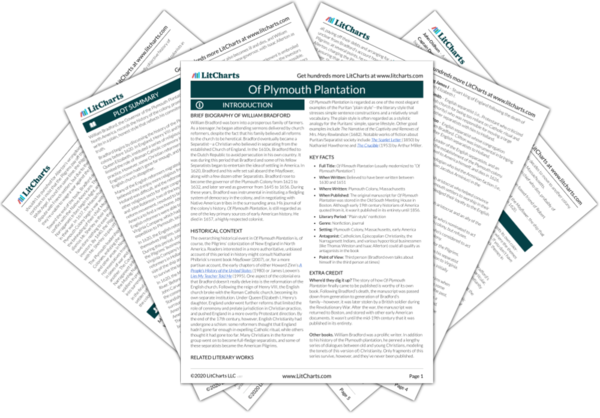Previous
Book 2, Chapter 22
|
Previous
Book 2, Chapter 22
|
Of Plymouth Plantation: Book 2, Chapter 23 Summary & Analysis |
Next
Book 2, Chapter 24
|


Upgrade to unlock the analysis and theme tracking for all of Of Plymouth PlantationOf Plymouth Plantation!
Get LitCharts A+